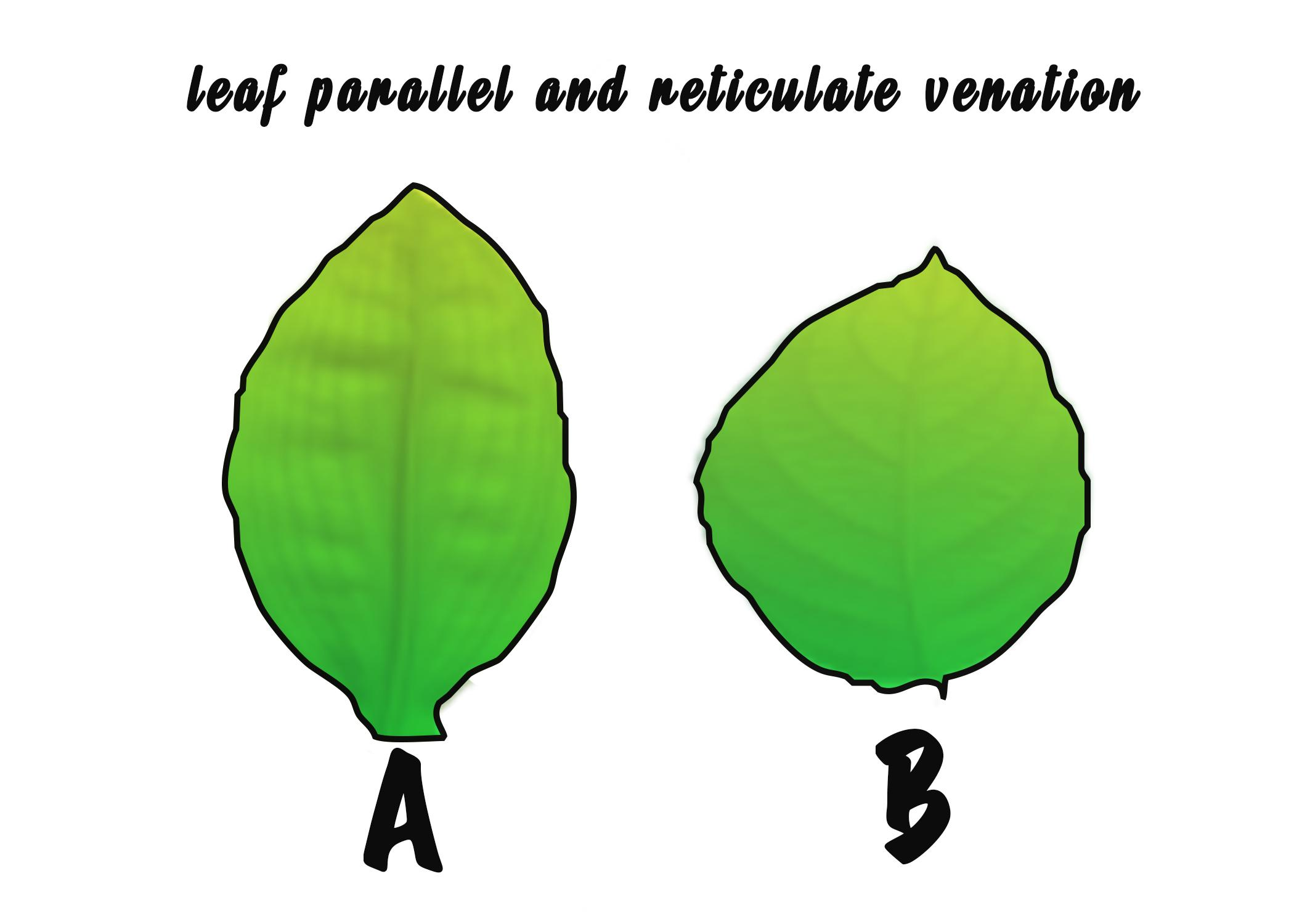
Please state if True or False: B represents reticulate venation.

(a) True
(b) False

Answer
465.9k+ views
Hint: The term reticulate refers to the net or web-like appearance on a surface and venation refers to a pattern of veins. As we see in the figures, figure A has a network of veins on the surface while figure B shows a pattern of parallel veins.
Complete answer:
- Figure A shows a reticulate venation while figure B shows parallel venation.
- The vascular tissue in every leaf forms veins. The arrangement of veins on the leaf is called the venation pattern.
- In reticulate venation, the lateral veins in the lamina of the leaf divide and redivide to form veinlets, forming a net like appearance.
- In parallel venation, the veins and veinlets run parallel to each other in straight lines without converging.
- Apart from the transport of water and nutrients, venation also provides mechanical support, protection, coordination in the development of the plants.
Additional Information:
- Reticulate venation is a feature of dicot plants, for eg., ficus, while parallel venation is a feature of monocot plants, like grass.
- The veins are composed of xylem and phloem, enclosed in the parenchyma, sclerenchyma and bounded by the sheath cells.
- Both reticulate and parallel venation are of two types: pinnate parallel venation where one main midvein is present and palmate parallel venation where multiple mid veins are present..
So, the statement is ‘(b) False’.
Note:
- Leaves of Ginkgo biloba show dichotomous venation. The veins are forked and each vein divides at intervals into smaller veins of approximately equal size.
- Venation is generally a feature of angiosperms.
Complete answer:
- Figure A shows a reticulate venation while figure B shows parallel venation.
- The vascular tissue in every leaf forms veins. The arrangement of veins on the leaf is called the venation pattern.
- In reticulate venation, the lateral veins in the lamina of the leaf divide and redivide to form veinlets, forming a net like appearance.
- In parallel venation, the veins and veinlets run parallel to each other in straight lines without converging.
- Apart from the transport of water and nutrients, venation also provides mechanical support, protection, coordination in the development of the plants.
Additional Information:
- Reticulate venation is a feature of dicot plants, for eg., ficus, while parallel venation is a feature of monocot plants, like grass.
- The veins are composed of xylem and phloem, enclosed in the parenchyma, sclerenchyma and bounded by the sheath cells.
- Both reticulate and parallel venation are of two types: pinnate parallel venation where one main midvein is present and palmate parallel venation where multiple mid veins are present..
So, the statement is ‘(b) False’.
Note:
- Leaves of Ginkgo biloba show dichotomous venation. The veins are forked and each vein divides at intervals into smaller veins of approximately equal size.
- Venation is generally a feature of angiosperms.
Recently Updated Pages
The correct geometry and hybridization for XeF4 are class 11 chemistry CBSE

Water softening by Clarks process uses ACalcium bicarbonate class 11 chemistry CBSE

With reference to graphite and diamond which of the class 11 chemistry CBSE

A certain household has consumed 250 units of energy class 11 physics CBSE

The lightest metal known is A beryllium B lithium C class 11 chemistry CBSE

What is the formula mass of the iodine molecule class 11 chemistry CBSE

Trending doubts
State the laws of reflection of light

One Metric ton is equal to kg A 10000 B 1000 C 100 class 11 physics CBSE

Difference Between Prokaryotic Cells and Eukaryotic Cells

What is the modal class for the following table given class 11 maths CBSE

How do I convert ms to kmh Give an example class 11 physics CBSE

Give an example of a solid solution in which the solute class 11 chemistry CBSE




